Sorry, just so we're clear, I'm not defending the decision to purchase the An-148 for the Russian military. And in fact the military didn't want the aircraft, and didn't pay for it. The purchase was made from a separate federal program to support domestic aircraft manufacturing. With a separate fund paying for the purchase, the MinDef accepted the aircraft. As for a competing project domestically, do you mean the SSJ? Because it has too many American components that could be subject to sanctions. Or do you mean the Tu-334? Which is dead, and should stay that way.The An-148 partnership was made at a time Russia when was willing to invest in Ukrainian military-industrial complex. Russians at the time could have instead invested in their own, which is what they have done since 2014. This deal has had many critics, as Russia has had its own domestic project in the same category as the An-148.
Russian Navy Discussions and Updates
- Thread starter Spacearrow99
- Start date
This is kind of off-topic and I am not an expert in this subject, but I will try to respond. The Tu-334 and An-148 do seem to have a roughly similar project timeline, with decision to discontinue Tu-334 for good coming close to the time that first serial An-148 manufactured at VASO in Voronezh flew for the first time. The fact that Tu-334 has not been picked up after 2014 does seem to further suggest that the Russian military may simply not need this class of aircraft as much and that the An-148 partnership was a means to support the Ukrainian industry. I could be wrong since I am getting this off of Wikipedia, and I am not sure how important this really is, but I am just trying to respond to Feanor's question.Sorry, just so we're clear, I'm not defending the decision to purchase the An-148 for the Russian military. And in fact the military didn't want the aircraft, and didn't pay for it. The purchase was made from a separate federal program to support domestic aircraft manufacturing. With a separate fund paying for the purchase, the MinDef accepted the aircraft. As for a competing project domestically, do you mean the SSJ? Because it has too many American components that could be subject to sanctions. Or do you mean the Tu-334? Which is dead, and should stay that way.
Edit: My main point is that Ukraine has seemed to continue to partner with Russia on projects that benefit Ukraine more than they benefit Russia, and these projects also do not seem as important for the Russian military. Such as the Be-200 and An-148.
Last edited:
The Tu-334 died because the factory didn't want to produce it, and the airline that was going to order it decided not to. Nobody wanted that airplane. It's an outdated aircraft, with unimpressive performance. The An-148 was chosen as the closest "domestic" alternative to be produced by the same factory (VASO) and for the same airline (Rossiya). Neither project was primarily or initially aimed at the military.This is kind of off-topic and I am not an expert in this subject, but I will try to respond. The Tu-334 and An-148 do seem to have a roughly similar project timeline, with decision to discontinue Tu-334 for good coming close to the time that first serial An-148 manufactured at VASO in Voronezh flew for the first time. The fact that Tu-334 has not been picked up after 2014 does seem to further suggest that the Russian military may simply not need this class of aircraft as much and that the An-148 partnership was a means to support the Ukrainian industry. I could be wrong since I am getting this off of Wikipedia, and I am not sure how important this really is, but I am just trying to respond to Feanor's question.
Edit: My main point is that Ukraine has seemed to continue to partner with Russia on projects that benefit Ukraine more than they benefit Russia, and these projects also do not seem as important for the Russian military. Such as the Be-200 and An-148.
And yes you're correct in your main point.
Update.
9 new ships were just laid down, including the first two large LHDs (project 23900), the 7th and 8th 22350s, two more 885Ms (the 7th and 8th), two more 23550 patrol icebreakers, and one more 12700 mine sweeper.
The LHDs are supposed to have 25 000 t displacement, have one A-190 100mm gun turret, 3 Palash CIWS gun-missile systems, and 2 Pantsyr-ME systems. They are supposed to have 320 crew, up to 1000 marines on board, with 6 landing boats, and up to 20 helos in the airwing.
The two 22350s are going to be the modified version with 24 UKSK cells, and otherwise identical to the 5th and 6th ships. It's possible that there are other changes between the first 4 and the second 4 ships, but we will likely have to wait to find out.

 bmpd.livejournal.com
bmpd.livejournal.com

 colonelcassad.livejournal.com
colonelcassad.livejournal.com

 bmpd.livejournal.com
bmpd.livejournal.com

 bmpd.livejournal.com
bmpd.livejournal.com

 colonelcassad.livejournal.com
colonelcassad.livejournal.com
The Admiral Kasatonov, the second 22350, has entered service.

 bmpd.livejournal.com
bmpd.livejournal.com
Initially it was thought that the Moskva underwent limited repairs, and would slowly be removed from service, but now other sources are claiming that the repairs were much more significant and the ship will serve another 20 years.

 tass.ru
tass.ru

 flotprom.ru
flotprom.ru
The Admiral Nakhimov is now expecting handover in 2022.

 ria.ru
ria.ru
The Knyaz Vladimir Borey-A has also entered service with the VMF.

 bmpd.livejournal.com
bmpd.livejournal.com
Ukrainian sources are accusing Russia of using their Black Sea pipelines to mount monitoring devices that can detect submarines. Similar projects were discussed in the past, usually surrounding the SLBM bastions, but it would make sense that this would be done in the Black Sea as well.
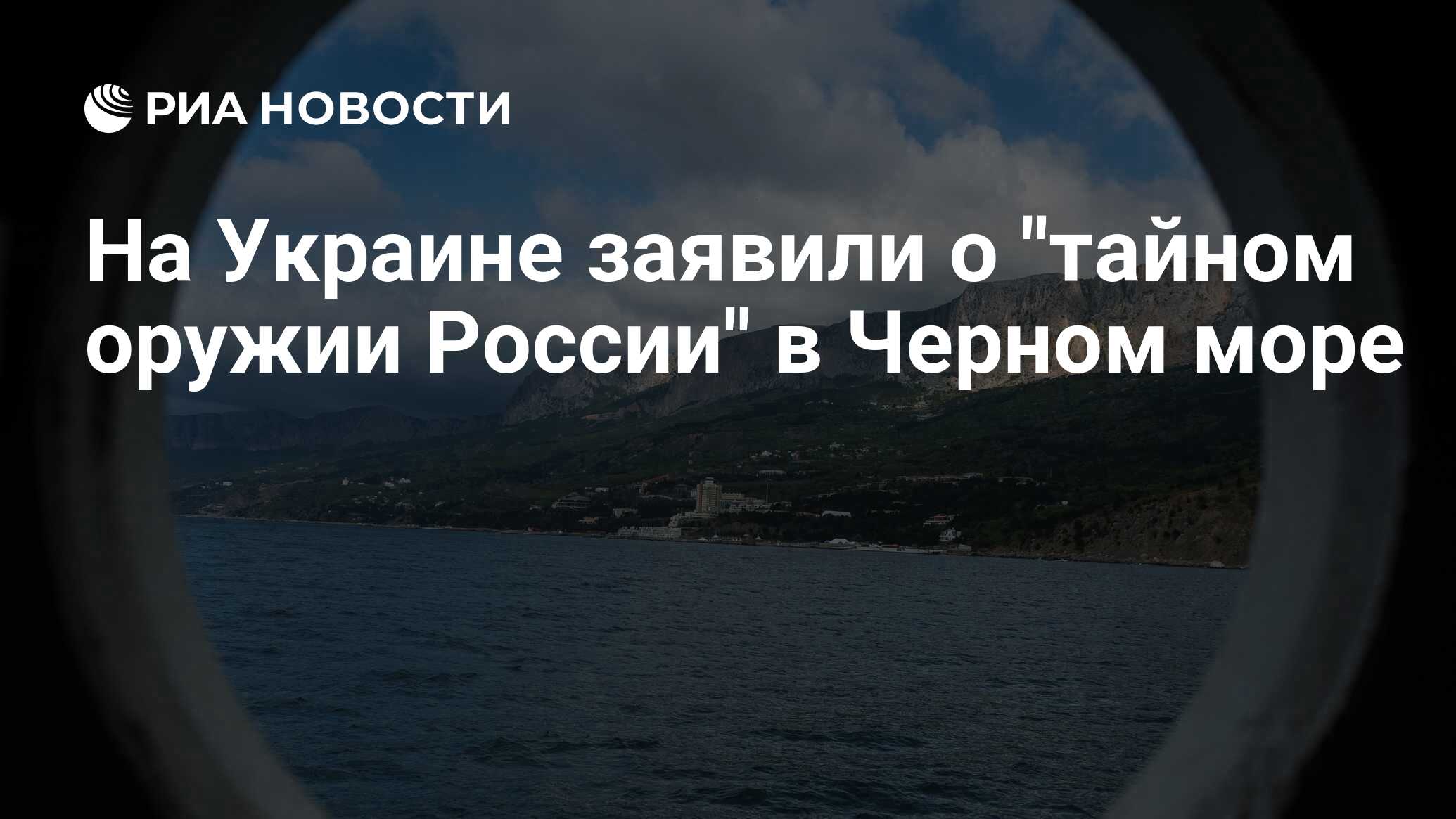
 ria.ru
'
ria.ru
'
The Russian government is making plans to purchase a new set of hospital ships for the VMF. They currently operate 3, one in the Northern, Pacific, and Black Sea Fleets, all built in Poland during the Soviet days.

 bmpd.livejournal.com
bmpd.livejournal.com
The 7th 20380 corvette is being transported down river towards Vladivostok to complete construction and join the Pacific Fleet.

 bmpd.livejournal.com
bmpd.livejournal.com
9 new ships were just laid down, including the first two large LHDs (project 23900), the 7th and 8th 22350s, two more 885Ms (the 7th and 8th), two more 23550 patrol icebreakers, and one more 12700 mine sweeper.
The LHDs are supposed to have 25 000 t displacement, have one A-190 100mm gun turret, 3 Palash CIWS gun-missile systems, and 2 Pantsyr-ME systems. They are supposed to have 320 crew, up to 1000 marines on board, with 6 landing boats, and up to 20 helos in the airwing.
The two 22350s are going to be the modified version with 24 UKSK cells, and otherwise identical to the 5th and 6th ships. It's possible that there are other changes between the first 4 and the second 4 ships, but we will likely have to wait to find out.
Заложены универсальные десантные корабли «Иван Рогов» и «Митрофан Москаленко» проекта 23900
20 июля 2020 года на ООО Судостроительный завод Залив в Керчи в присутствии Президента Российской Федерации Владимира Путина состоялась церемония официальной закладки для ВМФ России универсальных десантных кораблей Иван Рогов и Митрофан Москаленко…
ТТХ УДК типа 23900
Первые ТТХ УДК проекта 23900. Водоизмещение 25.000 тонн Длина 220 метров Ширина 33 метра Скорость хода 22 узла Дальность плавания 6.000 морских миль Автономность 60 суток Экипаж 320 человек Перевозка десанта - до 1000 человек Перевозка техники…
 colonelcassad.livejournal.com
colonelcassad.livejournal.com
Заложены атомные подводные лодки «Воронеж» и «Владивосток»
20 июля 2020 года на АО Производственное объединение Северное машиностроительное предприятие (СМП, входит в состав АО Объединенная судостроительная корпорация - ОСК) состоялась торжественная церемония закладки для ВМФ России двух многоцелевых атомных подводных…
Заложены фрегаты «Адмирал Юмашев» и «Адмирал Спиридонов» проекта 22350
20 июля 2020 года в Санкт-Петербурге на ПАО Судостроительный завод Северная верфь (входит в состав АО Объединенная судостроительная корпорация - ОСК) состоялась церемония одновременной закладки для ВМФ России двух фрегатов модифицированного проекта 22350,…
В Керчи заложили 2 новых УДК проекта 23900
В Керчи официально заложили два новых УДК проекта 23900 (до 1000 человек десанта и до 75 единиц техники, 20+ вертолетов, 6 катеров). Называться будут Иван Рогов и Митрофан Москаленко. Вариант с Севастополем и Владивостоком не прокатил. Кроме УДК в…
The Admiral Kasatonov, the second 22350, has entered service.
Подписан приемный акт фрегата «Адмирал флота Касатонов»
Как сообщило ПАО Судостроительный завод Северная верфь (Санкт-Петербург), 15 июля 2020 года на предприятии председатель комиссии Государственной приемки фрегата Виктор Иванов и ответственный сдатчик Денис Цветков подписали приемный акт первого серийного фрегата Адмирал…
Initially it was thought that the Moskva underwent limited repairs, and would slowly be removed from service, but now other sources are claiming that the repairs were much more significant and the ship will serve another 20 years.

Источник: крейсер "Москва" прослужит в составе ВМФ рекордные 60 лет
Предполагается, что в конце лета ракетный крейсер отправится в Средиземное море, где войдет в состав постоянного соединения ВМФ России

Крейсеру "Москва" пообещали еще десятки лет службы
Флагманский корабль Черноморского флота – гвардейского ордена Нахимова ракетный крейсер "Москва" после окончания ремонта и модернизации останется в боевом составе Черноморского флота еще десятки лет. Об этом в пятницу, 3 июля, сообщили <a href="http://ria.ru/">РИА Новости</a> в пресс-службе...
The Admiral Nakhimov is now expecting handover in 2022.

Крейсер "Адмирал Нахимов" передадут ВМФ в 2022 году
Атомный ракетный крейсер "Адмирал Нахимов" (проект 1144.2) будет передан ВМФ России в 2022 году, сообщил РИА Новости в понедельник глава Объединенной... РИА Новости, 29.06.2020
The Knyaz Vladimir Borey-A has also entered service with the VMF.
Атомный подводный ракетный крейсер «Князь Владимир» введен в строй ВМФ России
12 июня 2020 года в Северодвинске на АО Производственное объединение Северное машиностроительное предприятие (входит в состав АО Объединенная судостроительная корпорация - ОСК) состоялась церемония подъема Военно-морского флага ВМФ России на головном атомном…
Ukrainian sources are accusing Russia of using their Black Sea pipelines to mount monitoring devices that can detect submarines. Similar projects were discussed in the past, usually surrounding the SLBM bastions, but it would make sense that this would be done in the Black Sea as well.

На Украине заявили о "тайном оружии России" в Черном море
На Украине заявили о "тайной разработке" России — эшелонированной системе освещения надводной и подводной обстановки в Черном море. Об этом говорится в... РИА Новости, 20.07.2020
The Russian government is making plans to purchase a new set of hospital ships for the VMF. They currently operate 3, one in the Northern, Pacific, and Black Sea Fleets, all built in Poland during the Soviet days.
Планы приобретения новых госпитальных судов для ВМФ России
Как сообщает газета Коммерсантъ в материале Анастасии Веденеевой На судостроении ставят красный крест. Власти обсуждают обновление госпитального флота, в правительстве обсуждают закупку госпитальных судов. Вопрос поднял глава Министерства обороны Сергей Шойгу: министерство…
The 7th 20380 corvette is being transported down river towards Vladivostok to complete construction and join the Pacific Fleet.
Начата транспортировка корвета «Герой Российской Федерации Алдар Цыденжапов» во Владивосток
Как сообщил комсомольский-на-амуре городской ресурс komcity.ru , 3 июня 2020 года началась транспортировка из Комсомольска-на-Амуре с ПАО Амурский судостроительный завод по Амуру во Владивосток на сдаточную базу предприятия корвета проекта 20380 Герой Российской Федерации…
Sandhi Yudha
Well-Known Member
1. It seems that the first 2 vessels of the new Project 23900 LHD class are getting the same name as the Ivan Rogov class : Ivan Rogov and Mitrofan Moskalenko.

 tass.ru
tass.ru
A remarkable step to give the first of class the same name as the first of the old Project 1174 Nosorog class. This can lead to misunderstandings.
2. About the 22350, that means that the plan for the construction of the enlarged 22350M is still moved back. So no real replacements for the 956 the coming 10 years.
3. So with keeping the Moskwa active until 2040, it means that also the old P-1000 Vulkan missiles stay active and operationable until 2040?

 tass.com
tass.com

В России впервые заложили два универсальных десантных корабля-вертолетоносца
Они получат имена "Иван Рогов" и "Митрофан Москаленко"
A remarkable step to give the first of class the same name as the first of the old Project 1174 Nosorog class. This can lead to misunderstandings.
2. About the 22350, that means that the plan for the construction of the enlarged 22350M is still moved back. So no real replacements for the 956 the coming 10 years.
3. So with keeping the Moskwa active until 2040, it means that also the old P-1000 Vulkan missiles stay active and operationable until 2040?

Russian Black Sea Fleet flagship to remain in service until 2040 — source
It will be a record of the overall time of service among Russian 1st rank warships
Last edited:
I've come across suggestions that the 22350 and 22350M will be built side by side. Despite the classification confusion, the 22350M appears to really be more of a destroyer than a frigate. The information we have suggests that the 22350M is in the 8000 t range, and has significant greater endurance and combat load. I'm not sure Russia can produce them in sufficient quantities to fill the frigate slot. While it's entirely possible that the 22350M will mean the end of the 22350 line, I certainly hope not. Russia can produce 15-18 22350s, but likely only a dozen or so 22350Ms. Cutting the former in favor of the latter will give us a marginal increase in quantity.1. It seems that the first 2 vessels of the new Project 23900 LHD class are getting the same name as the Ivan Rogov class : Ivan Rogov and Mitrofan Moskalenko.

В России впервые заложили два универсальных десантных корабля-вертолетоносца
Они получат имена "Иван Рогов" и "Митрофан Москаленко"tass.ru
A remarkable step to give the first of class the same name as the first of the old Project 1174 Nosorog class. This can lead to misunderstandings.
2. About the 22350, that means that the plan for the construction of the enlarged 22350M is still moved back. So no real replacements for the 956 the coming 10 years.
3
Sandhi Yudha
Well-Known Member
Cool...i did not know that there were actually multiple ekranoplans.

 www.thedrive.com
www.thedrive.com

The Only Missile-Toting Ekranoplan Russia Ever Built Just Took Its Last Trip On The Caspian
The sole completed Lun class ekranoplan is now set to go on public display after decades of languishing in disrepair.
Sandhi Yudha
Well-Known Member
The 4th Project 22800 Tsiklon has recently been launched.
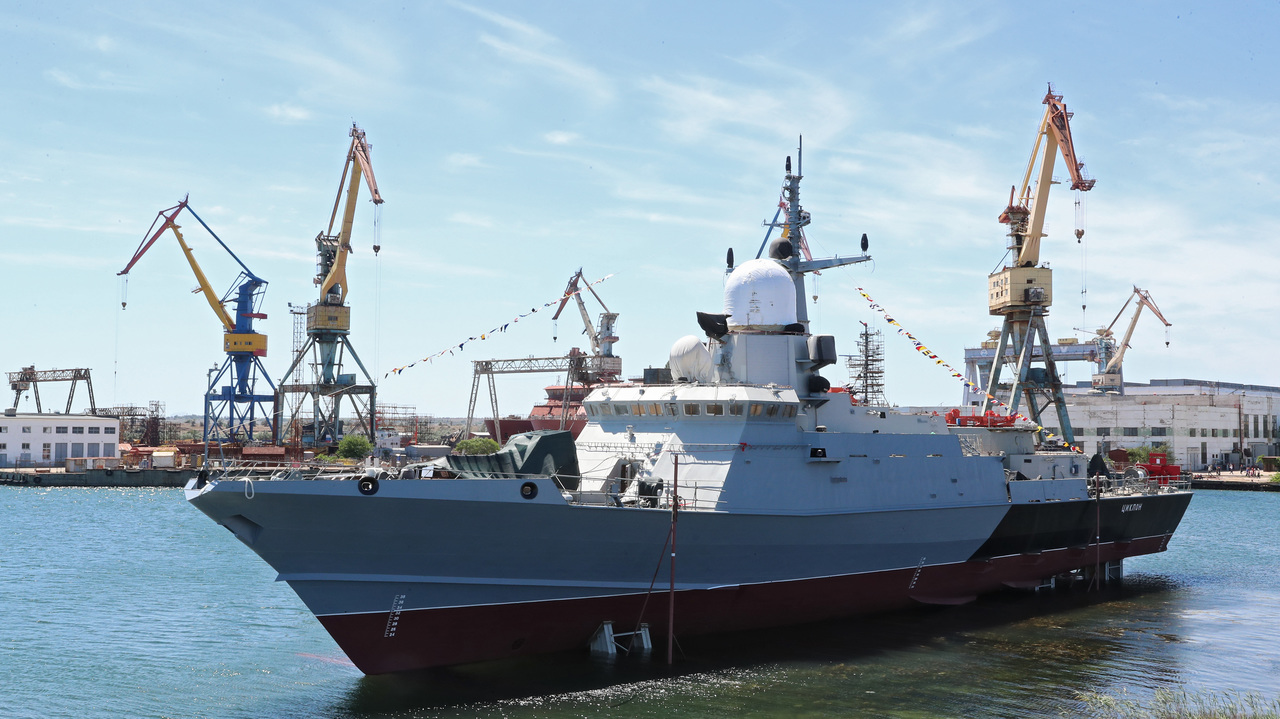
 www.navalnews.com
www.navalnews.com
The keel of the 8th Project 12700 Alexandrit class minehunter has been layed. So the production goes quite fast and smoothly.
However, Feanor recently told us that much of the MCM-equipment are not delivered/produced yet or something. Are there still problems with the equipment?
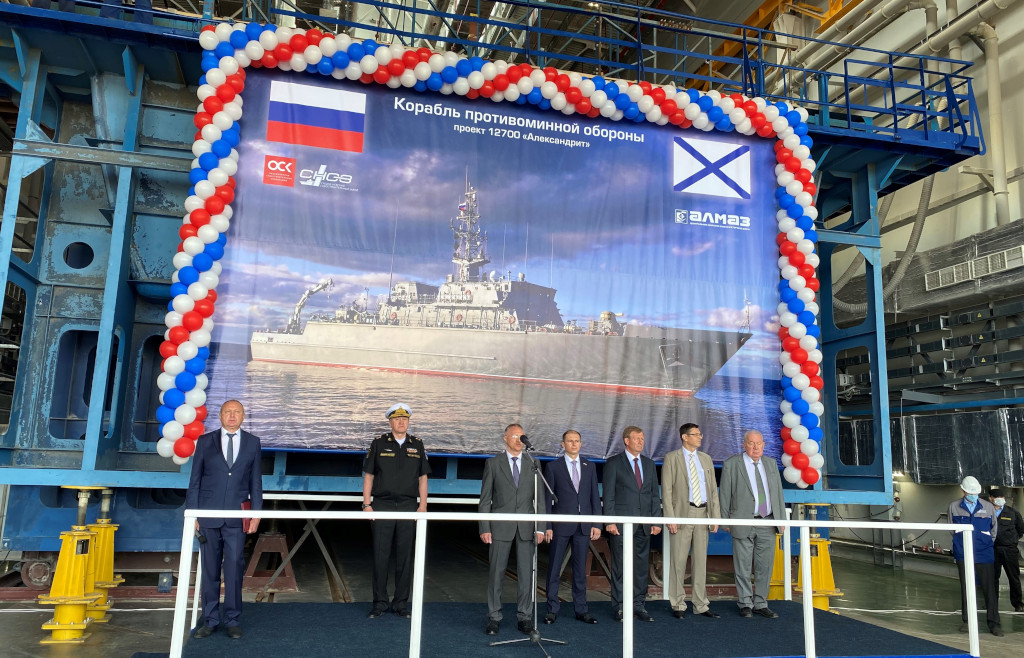
 www.navalnews.com
www.navalnews.com
 snsz.ru
snsz.ru

Zaliv shipyard Launched the 4th Karakurt-class Corvette 'Tsiklon' For Russian Navy - Naval News
Zaliv Shipyard in Crimea launched the fourth Karakurt-class corvette of project 22800, "Tsiklon" (Cyclone) on 24 July the Russian Defense Ministry said.
The keel of the 8th Project 12700 Alexandrit class minehunter has been layed. So the production goes quite fast and smoothly.
However, Feanor recently told us that much of the MCM-equipment are not delivered/produced yet or something. Are there still problems with the equipment?

Sredne-Nevsky Shipyard Lays Keel of 8th Alexandrit-class MCM Vessel for Russian Navy - Naval News
Sredne-Nevsky Shipyard laid the keel of the "Lev Chernavin" on 24 July. It is the 8th Alexandrite-class mine counter measure (MCM) vessel of project 12700 for the Russian navy, the enterprise said.
СНСЗ - На СНСЗ заложили восьмой корабль противоминной обороны проекта 12700
24 июля 2020 г. на Средне-Невском судостроительном завод состоялась торжественная церемония закладки новейшего корабля противоминной обороны проекта 12700 «Лев Чернавин».
Iirc the 8th or 9th ship is supposed to be larger and feature a new mine-sweeping gear. The current ships were suggested to have French gear but that got bogged down. Instead they have a domestic one that isn't very good. But can apparently be delivered on time and with reasonable cost overruns. They're basically good for finding mines but not good for removing them.The 4th Project 22800 Tsiklon has recently been launched.

Zaliv shipyard Launched the 4th Karakurt-class Corvette 'Tsiklon' For Russian Navy - Naval News
Zaliv Shipyard in Crimea launched the fourth Karakurt-class corvette of project 22800, "Tsiklon" (Cyclone) on 24 July the Russian Defense Ministry said.www.navalnews.com
The keel of the 8th Project 12700 Alexandrit class minehunter has been layed. So the production goes quite fast and smoothly.
However, Feanor recently told us that much of the MCM-equipment are not delivered/produced yet or something. Are there still problems with the equipment?

Sredne-Nevsky Shipyard Lays Keel of 8th Alexandrit-class MCM Vessel for Russian Navy - Naval News
Sredne-Nevsky Shipyard laid the keel of the "Lev Chernavin" on 24 July. It is the 8th Alexandrite-class mine counter measure (MCM) vessel of project 12700 for the Russian navy, the enterprise said.www.navalnews.com
СНСЗ - На СНСЗ заложили восьмой корабль противоминной обороны проекта 12700
24 июля 2020 г. на Средне-Невском судостроительном завод состоялась торжественная церемония закладки новейшего корабля противоминной обороны проекта 12700 «Лев Чернавин».snsz.ru
Sandhi Yudha
Well-Known Member
Thank you!Iirc the 8th or 9th ship is supposed to be larger and feature a new mine-sweeping gear. The current ships were suggested to have French gear but that got bogged down. Instead they have a domestic one that isn't very good. But can apparently be delivered on time and with reasonable cost overruns. They're basically good for finding mines but not good for removing them.
Interesting
Had the old Ivan Rogov class, Project 1174, also a (secondary) command ship function?

Russia's Project 23900 LHD to operate as Command Ship - Naval News
The "Ivan Rogov" and the "Mitrofan Moskalenko", the first Russian LHD / amphibious assault ships of project 23900 will be able to operate as floating headquarters or command ships.
Last edited by a moderator:
I don't know enough to answer that, but these ships are basically a Russian Mistral-equivalent, with similar design and purpose. And the Mistral definitely features command functions.Interesting
Had the old Ivan Rogov class, Project 1174, also a (secondary) command ship function?

Russia's Project 23900 LHD to operate as Command Ship - Naval News
The "Ivan Rogov" and the "Mitrofan Moskalenko", the first Russian LHD / amphibious assault ships of project 23900 will be able to operate as floating headquarters or command ships.www.navalnews.com
Sandhi Yudha
Well-Known Member
Recently spotted by a RAF P-8 at the Northsea.
Remarkable, that the Vasily Bykov, a Project 22160 large patrol boat, is spotted in the North-Sea. I thought it was part of the Black Sea Fleet.
Remarkable, that the Vasily Bykov, a Project 22160 large patrol boat, is spotted in the North-Sea. I thought it was part of the Black Sea Fleet.
Attachments
-
33.7 KB Views: 12
It's not that surprising. First off the VMF is notorious for running small ships over large distances. Even the flat-bottomed (relatively) 21631s sailed from the Black Sea to the Baltic, all around Europe. Second off the 22160 is a weird project, with an endurance of 60 days, comparable to Soviet destroyers, but the tonnage of a small corvette. The type is design for extended voyages.Recently spotted by a RAF P-8 at the Northsea.
Remarkable, that the Vasily Bykov, a Project 22160 large patrol boat, is spotted in the North-Sea. I thought it was part of the Black Sea Fleet.
Update.
The third 22160 patrol ship has begun factory trials.

 bmpd.livejournal.com
bmpd.livejournal.com
A 22800 small missile ship has been launched in Crimea.

 dambiev.livejournal.com
dambiev.livejournal.com

 bmpd.livejournal.com
bmpd.livejournal.com
The 8th 12700 minesweeper has been laid down. From the 9th hull onward, the type is supposed to grow in size and get a new unmanned minesweeper.

 dambiev.livejournal.com
dambiev.livejournal.com

 bmpd.livejournal.com
bmpd.livejournal.com
The first link shows some testing on a new integrated mast with presumably AESA radars. This looks a lot like the masts on the 22800s that are supposed to carry the Pantsyr. The second is land trials for the navalized Pantsyr.

 charly015.blogspot.com
charly015.blogspot.com

 charly015.blogspot.com
charly015.blogspot.com
The 11356 frigate Adminral Essen has conducted joint exercises with the Utes AShM system launching a missile, and the frigate intercepting it. Exercises like this are relatively rare in the VMF but have been more common over the past few years.

A European satellite has apparently recorded a Kinzhal launched from a ship in the Barents sea, note this is the SAM, not the air-launched ballistic missile. It was apparently part of a two-way exercise with a near-by submarine.

The 4th 22800 has been laid down at the Amur yards. As a reminder, the Pacific Fleets current renewal plan includes 4 new 20380 corvettes (with a possible follow-on contract for as many as 10 more, though current sources talk about 6 more for a total of 10) 6 636.3 submarines, and 6 22800 small missile ships. Also, most likely, 3 of the 1155s are going to get the Shaposhnikov treatment to 1155M standard. Also in the works are 3 22350 frigates. This gives us the following projected 2030 ORBAT for the Pacific Fleet;
1 1164 cruiser
3 1155M "frigates"
3 22350 frigates
4-? 20380 corvettes
6 22800 small missile ships
6 636.3 diesel-electric subs
Outside of this are the plans for the nuclear submarine fleet, as well as upgrade plans for a number of Soviet small missile ships to receive the X-35.

 bmpd.livejournal.com
bmpd.livejournal.com
Footage from the trials of the third 22800, the first to carry the navalized Pantsyr.
 vk.com
vk.com
The Vepr project 971 nuclear submarine is back from a long overhaul, to the Northern Fleet.

 tass.ru
tass.ru
The third 20380 for the Pacific Fleet is undergoing de-gaussing.
 vk.com
vk.com
The third 22160 patrol ship has begun factory trials.
Патрульный корабль «Павел Державин» проекта 22160 вышел на заводские ходовые испытания
Как сообщила 22 июля 2020 года пресс-служба Черноморского флота, из Новороссийска на заводские ходовые испытания вышел патрульный корабль Павел Державин проекта 22160 (заводской номер 163) - третий корабль этого проекта, и первый, построенный на ООО Судостроительный завод…
A 22800 small missile ship has been launched in Crimea.
В Керчи спущен на воду малый ракетный корабль «Циклон» проекта 22800
Фото (с) пресс-служба Главы Республики Крым 24 июля 2020 года на ООО Судостроительный завод Залив в Керчи состоялась торжественная церемония спуска на воду малого ракетного корабля Циклон проекта 22800 (шифр Каракурт). Как ранее сообщали коллеги…
Спущен на воду малый ракетный корабль «Циклон» проекта 22800
24 июля 2020 года в Керчи на ООО Судостроительный завод Залив состоялся спуск на воду головного строящегося на этом предприятии для ВМФ России малого ракетного корабля Циклон проекта 22800 (шифр Каракурт) с заводским номером 801. На церемонии спуска…
The 8th 12700 minesweeper has been laid down. From the 9th hull onward, the type is supposed to grow in size and get a new unmanned minesweeper.
Заложен восьмой корабль противоминной обороны (ПМО) проекта 12700 «Лев Чернавин»
Как сообщает пресс-служба АО СНСЗ 24 июля 2020 года на Средне-Невском судостроительном заводе (входит в Объединённую судостроительную корпорацию) состоялась торжественная церемония закладки новейшего корабля противоминной обороны (ПМО) проекта 12700 Лев Чернавин. Церемония…
Заложен тральщик «Лев Чернавин» проекта 12700
24 июля 2020 года на АО Средне-Невский судостроительный завод (СНСЗ, входит в АО Объединенная судостроительная корпорация - ОСК) в Санкт-Петербурге состоялась торжественная церемония закладки строящегося для ВМФ России корабля противоминной обороны (морского тральщика)…
The first link shows some testing on a new integrated mast with presumably AESA radars. This looks a lot like the masts on the 22800s that are supposed to carry the Pantsyr. The second is land trials for the navalized Pantsyr.

Nueva solución para las antenas del Pantsir
Cosas de interés Aparentemente vemos lo que será la nueva solución para integrar las antenas del sistema ruso de defensa aérea Pantsir... ...

Secuencia de lanzamiento de un misil en un Pantsir M
Cosas de interés Echar mano de un visor Vympel de los que se instalan en los buques rusos y que les permiten manejar manualmente sistemas ...
The 11356 frigate Adminral Essen has conducted joint exercises with the Utes AShM system launching a missile, and the frigate intercepting it. Exercises like this are relatively rare in the VMF but have been more common over the past few years.

A European satellite has apparently recorded a Kinzhal launched from a ship in the Barents sea, note this is the SAM, not the air-launched ballistic missile. It was apparently part of a two-way exercise with a near-by submarine.

The 4th 22800 has been laid down at the Amur yards. As a reminder, the Pacific Fleets current renewal plan includes 4 new 20380 corvettes (with a possible follow-on contract for as many as 10 more, though current sources talk about 6 more for a total of 10) 6 636.3 submarines, and 6 22800 small missile ships. Also, most likely, 3 of the 1155s are going to get the Shaposhnikov treatment to 1155M standard. Also in the works are 3 22350 frigates. This gives us the following projected 2030 ORBAT for the Pacific Fleet;
1 1164 cruiser
3 1155M "frigates"
3 22350 frigates
4-? 20380 corvettes
6 22800 small missile ships
6 636.3 diesel-electric subs
Outside of this are the plans for the nuclear submarine fleet, as well as upgrade plans for a number of Soviet small missile ships to receive the X-35.
На Амурском судостроительном заводе заложен малый ракетный корабль «Павловск» проекта 22800
29 июля 2020 года на ПАО Амурский судостроительный завод (АСЗ, входит в состав АО Объединенная судостроительная корпорация - ОСК) в Комсомольске-на-Амуре состоялась церемония закладки для Тихоокеанского флота ВМФ России малого ракетного корабля Павловск…
Footage from the trials of the third 22800, the first to carry the navalized Pantsyr.
VK.com | VK
The Vepr project 971 nuclear submarine is back from a long overhaul, to the Northern Fleet.

Подлодка "Вепрь" после ремонта вернулась в состав ВМФ России
Замминистра обороны Алексей Криворучко напомнил, что также в этом году флот получил первый серийный фрегат проекта 22350 "Адмирал флота Касатонов" и атомный подводный крейсер проекта 955А "Князь Владимир"
The third 20380 for the Pacific Fleet is undergoing de-gaussing.
VK.com | VK
Sandhi Yudha
Well-Known Member
It is not clear yet if the AK-130 twin 130 mm gun will be replaced with the A-192 single barrel one.

 www.forbes.com
www.forbes.com

Russia’s Giant Battle Cruiser Will Return
Russia may be about to relaunch the battle cruiser Admiral Nakhimov. With the latest weapons and sensors it will arguably be the most powerful surface combatant in the world.
 www.forbes.com
www.forbes.com
Kapitan
New Member
This is a reviewed piece that i was able to publish to the public domain, it denotes the Russian navy today in a simplified format.
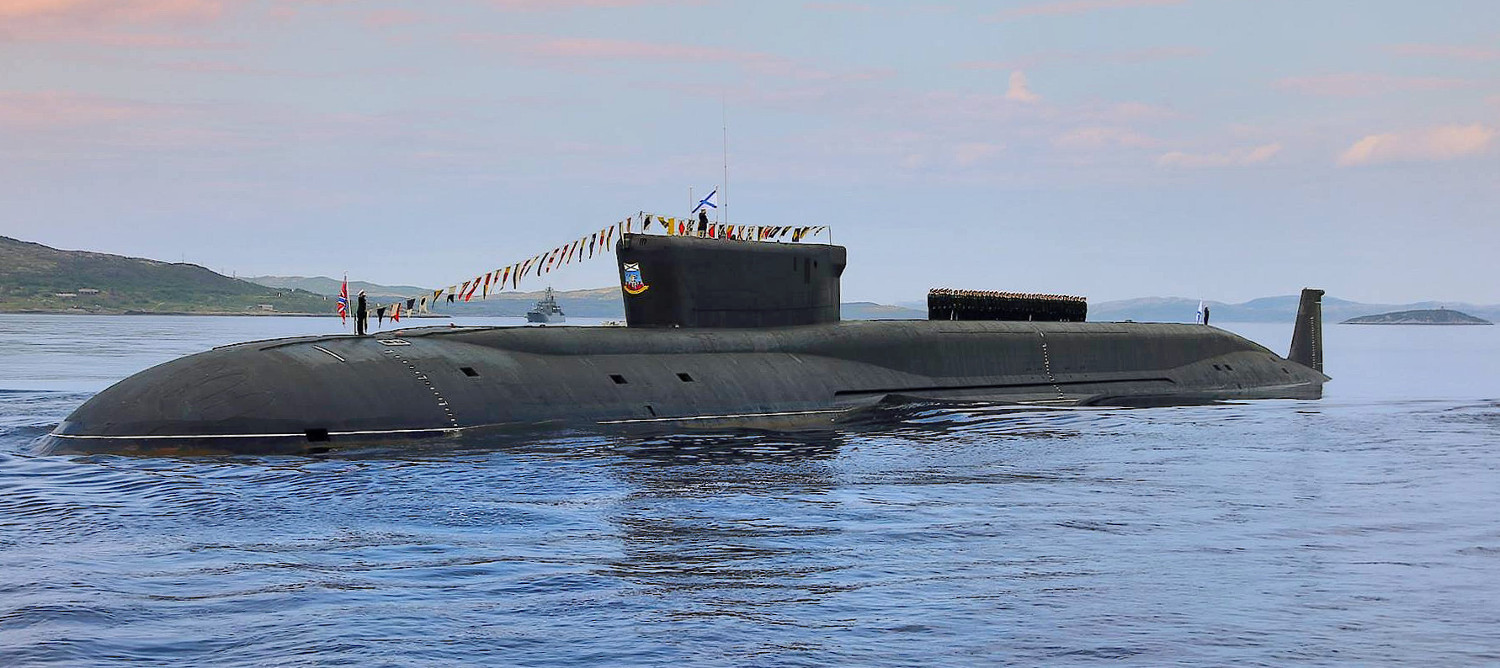
 www.navygeneralboard.com
www.navygeneralboard.com

Return of the Russian Navy - Navy General Board
Crippled by the end of the Cold War, the Russian Navy has seen a resurgence. Blair Shaw examines the return of the Russian Navy.
 www.navygeneralboard.com
www.navygeneralboard.com
Welcome to defencetalk Kapitan. First off, please read the rules Forum RulesThis is a reviewed piece that i was able to publish to the public domain, it denotes the Russian navy today in a simplified format.

Return of the Russian Navy - Navy General Board
Crippled by the end of the Cold War, the Russian Navy has seen a resurgence. Blair Shaw examines the return of the Russian Navy.www.navygeneralboard.com
Second off, please read some of the existing threads, so you can post in the appropriate topic. Quite often the topic you wish to discuss already has a thread dedicated to it. One of our moderators has moved your post here, to the appropriate thread.
Third off, please note that simply posting links to your own material comes across as advertisement rather then an attempt to start discussion. Advertising without the approval of the site owner is against the rules.
Now to deal with the topic at hand. Your article is a decent summary of major ships of the VMF, but it ignores much of the nuance. The biggest weak spots of the Russian Navy aren't listed in it. They are, in no particular order, anti-submarine warfare both shipbourne and airbourne (the AVMF is in particularly sad shape), mine-laying and mine-sweeping (though this is somewhat improving with the new 12700 trawlers, the VMF needs a better unmanned mineclearer and the 9th hull of the 12700 is supposed to carry it), and modern torpedoes both in terms of practice of employment and actual hardware. These are the kinds of nuances that could make a huge difference. For example you discuss the abilities of the Baltic Fleet in comparison to the Baltic States and the Finns, but the Finns are more then capable of deploying large quantities of sea mines and the VMF has a good chance of losing ships to them, and an even better chance of having their operations significantly disrupted by Finnish sea mines.
Kapitan
New Member
1st off thankyou for the welcomeWelcome to defencetalk Kapitan. First off, please read the rules Forum Rules
Second off, please read some of the existing threads, so you can post in the appropriate topic. Quite often the topic you wish to discuss already has a thread dedicated to it. One of our moderators has moved your post here, to the appropriate thread.
Third off, please note that simply posting links to your own material comes across as advertisement rather then an attempt to start discussion. Advertising without the approval of the site owner is against the rules.
Now to deal with the topic at hand. Your article is a decent summary of major ships of the VMF, but it ignores much of the nuance. The biggest weak spots of the Russian Navy aren't listed in it. They are, in no particular order, anti-submarine warfare both shipbourne and airbourne (the AVMF is in particularly sad shape), mine-laying and mine-sweeping (though this is somewhat improving with the new 12700 trawlers, the VMF needs a better unmanned mineclearer and the 9th hull of the 12700 is supposed to carry it), and modern torpedoes both in terms of practice of employment and actual hardware. These are the kinds of nuances that could make a huge difference. For example you discuss the abilities of the Baltic Fleet in comparison to the Baltic States and the Finns, but the Finns are more then capable of deploying large quantities of sea mines and the VMF has a good chance of losing ships to them, and an even better chance of having their operations significantly disrupted by Finnish sea mines.
2nd i did read some of the threads admittedly could have done a better job that i did on this
3rd off this part of the report is some of my work the whole thing is 175 pages in length and it is put together by multiple people, its not as an advert for the NGB or anything of the sorts just sharing what im allowed to.
4th it does ignore some topics as the brief we recieved when writing was to focus mainly on a fleet overview and operational capabilities and stratergy the entire report which is not present focuses predominantly on logistics (havent got permission to release that yet) the focus is squarly on capabilities and not capabilities v opposition its more of what they can do unhindered by NATO.
Indeed there is a big swathe of problems in the fleet along with the long range aviation arm with regards to ASW and in some instances as well ASuW, while the Finns and Poles can certain ruin their day the Russians are expanding mine warfare vessels the Alexandrit class to be exact, however in the case of the baltic my view is they wont venture out too far beyond the range of their air force thus they would be trapped by their own tactics rather than our mines.
I also dont see a major fleet deployment beyond the limits of the North Cape nor beyond the Kamchatka peninsular in time of war simply because they rely heavily on land based aircraft.
But thats just my view but i agree a lot of things need addressing and right now i think its under way.
Indeed i could have done a better job on the initial post something i will consider for future reference.
Spacearrow99
Member
- Thread Starter Thread Starter
- #1,499
1st off thankyou for the welcome
2nd i did read some of the threads admittedly could have done a better job that i did on this
3rd off this part of the report is some of my work the whole thing is 175 pages in length and it is put together by multiple people, its not as an advert for the NGB or anything of the sorts just sharing what im allowed to.
4th it does ignore some topics as the brief we recieved when writing was to focus mainly on a fleet overview and operational capabilities and stratergy the entire report which is not present focuses predominantly on logistics (havent got permission to release that yet) the focus is squarly on capabilities and not capabilities v opposition its more of what they can do unhindered by NATO.
Indeed there is a big swathe of problems in the fleet along with the long range aviation arm with regards to ASW and in some instances as well ASuW, while the Finns and Poles can certain ruin their day the Russians are expanding mine warfare vessels the Alexandrit class to be exact, however in the case of the baltic my view is they wont venture out too far beyond the range of their air force thus they would be trapped by their own tactics rather than our mines.
I also dont see a major fleet deployment beyond the limits of the North Cape nor beyond the Kamchatka peninsular in time of war simply because they rely heavily on land based aircraft.
But thats just my view but i agree a lot of things need addressing and right now i think its under way.
Indeed i could have done a better job on the initial post something i will consider for future reference.
Spacearrow99
Member
- Thread Starter Thread Starter
- #1,500
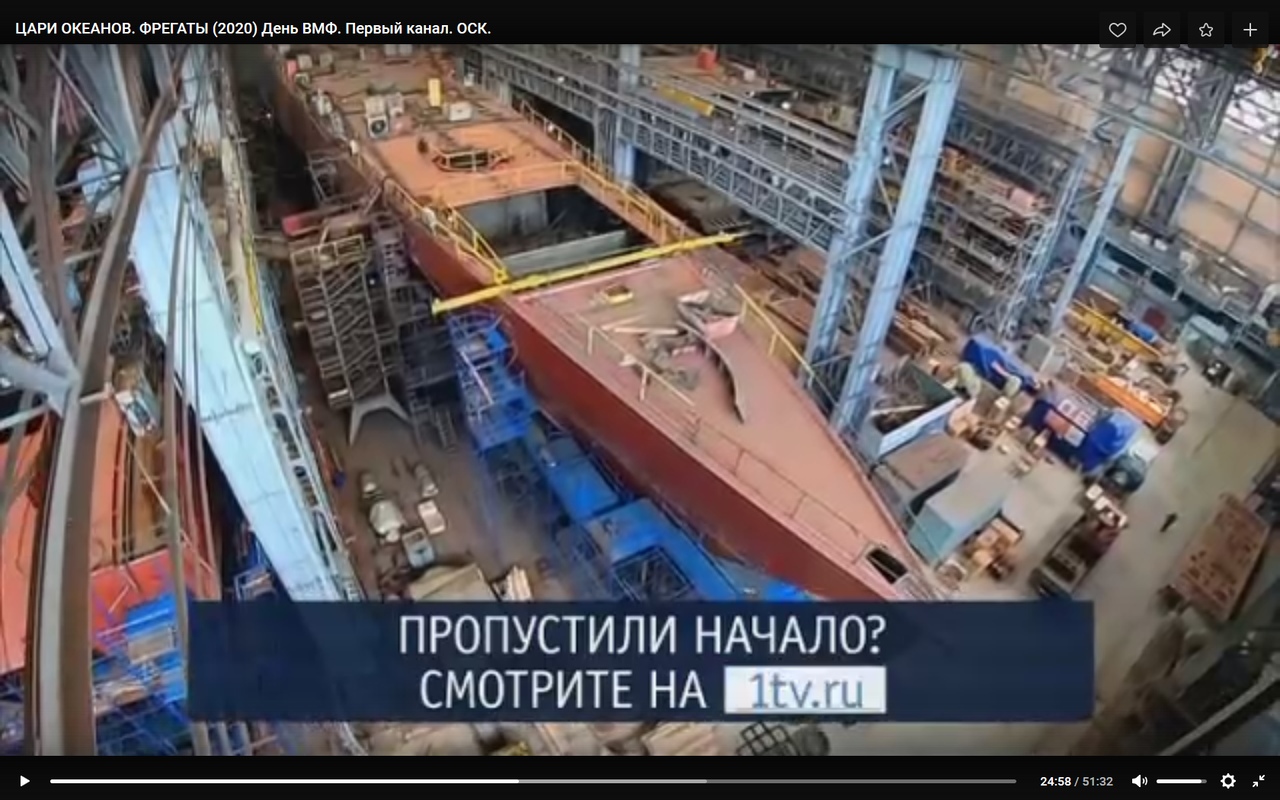
Here's a pic front section of 20386. The redut vls will almost spand the beam of the ship. That means it will have 32 redut 20386 frigate uksk model. We will have to see if uksk launchers are installed, but the low redut vls was my main problem with this ship.
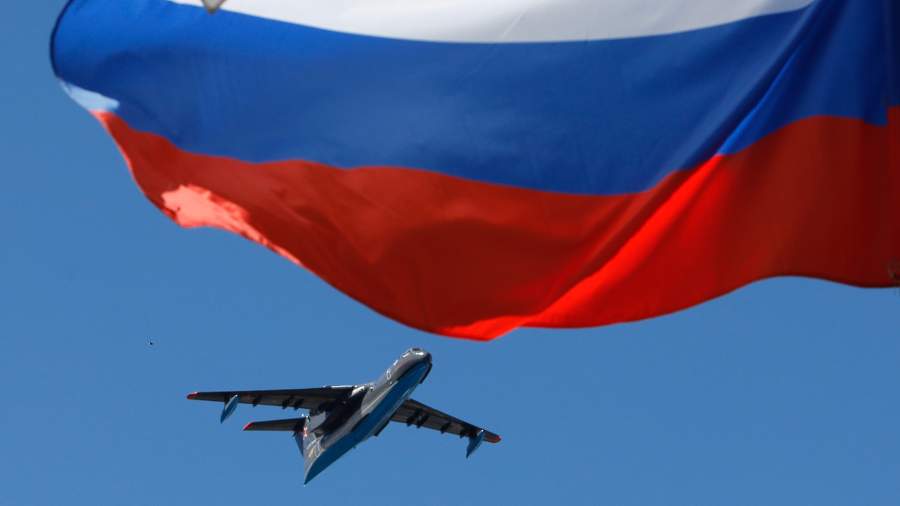
Готовят с суши: в Арктике создают отряд противолодочных амфибий
Самолеты Бе-200 Северного флота будут базироваться на восстановленном советском гидроаэродроме
They are procuring be-200 aircraft, but reports about making MPA out of tu-204/214 and il-114 have been published in the last few years.
Last edited:

